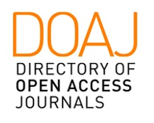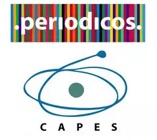Leviathan and the Air-Pump
After 40 Years: Reception, Criticism and Impacts
In 1985, Steven Shapin and Simon Schaffer published Leviathan and the Air-Pump, a book that became emblematic and not just for the history of science. It was the last book they wrote with a typewriter and a paper manuscript (Shapin and Schaffer 2011). That work was produced in the world of the typewriter, in an academic culture that expressed the skills and limitations of those who worked with a typewriter and the intellectual and social orders which that technology enabled. It was a production with a different tempo, surrounded by a set of indispensable objects – today wholly unnecessary and almost unknown – to avoid typographical errors and to correct the sloppiness caused by the clumsiness of urgent hands. To sum up, Leviathan burst into academic circles as an act of intervention, seeking to provoke significant changes: “it is a product of its time (...) it is a historical document. It is a moment in changing scholarly traditions, changing cultural and institutional settings, changing conventions, problems and purposes” (Shapin and Schaffer 2011, xiii). Before becoming a canonical historical work, it was simultaneously configured into a promise to be fulfilled and a field of controversies, promoting rewritings, appropriations, and discordances.
In that light, we suggest some guidelines for contributions to this special issue. One such line is aimed at reviewing the work’s reception, since its publication and especially in the 1990s, in different areas of science studies. Paradigmatic cases are Bruno Latour’s critical appropriation in Nous n’avons jamais été modernes (1991); Ian Hacking’s rewriting and appropriations (1991; 2006; 2009) in his philosophy of science; Donna Haraway’s critiques (1997) from feminist theory; Elizabeth Potter’s (2000) rewriting of Boyle’s history, addressing the ways in which gender was at stake in the constitution of experimental philosophy; the contestations between philosophy of science, history of science, and science and technology studies (Daston 2009; Dear and Jasanoff 2010) around disciplinary boundaries that involved Leviathan and the Air-Pump as one of the protagonists; and the placing of value on that work in the weave of the history of the historiography of science (Golinski 1998). This line also includes the appropriations that historians in different countries have made of Leviathan in order to understand the histories of local sciences, the methodological revision of the historiography of science, and the mutual appropriations of history and the history of science permeated by the sense of heretical and worldly history implicit in Leviathan.
Another of the guides is directed to the lines of research that opened up after its publication. In that sense, the historiographical and sociological works of Steven Shapin (Shapin 1994, 2010; Shapin and Schaffer 1985) were fundamental to understanding the ineliminable role of testimony and trust in the constitution and maintenance of social orders and knowledge. They constitute the antecedents of critical contemporary developments in social epistemology, primarily the epistemology of testimony (Kusch 2002). Likewise, the thesis of the joint production of the social order, the natural order and the order of knowledge brings together a heterogeneous set of approaches in what Sheila Jasanoff (2004) called “the co
productionist languages of scientific knowledge”. One of the axes that runs through these studies can be summarized in Shapin and Schaffer’s thesis: solutions to the problem of knowledge are solutions to the problem of social order. Furthermore, it is worth noting the role Leviathan played regarding the centrality that the material nature of scientific practice has taken in current science studies. Neo-materialist philosophy proposes a performative understanding of discursive-material practices, challenging the belief in the power of words to represent pre-existing things (Barad 2007). Finally, we propose a reflection on the value of Leviathan for the future realizations of the historiography of science in light of the central themes and lines of research that this now canonical text has left as promises to fulfill: the contingency of science and the history of science, the mundanity of the history of science, controversies, the bodies of science, the spaces of science and credibility in science, the lack of boundaries to determine what is relevant or not in the historical investigation of science, among others.
We hope to receive contributions that discuss all the above possibilities and other similar topics concerning Leviathan and the Air-Pump reception, criticism and impacts.
References
Daston, Lorraine (2009). Science Studies and the History of Science. Critical Inquiry, 35:798– 813.
Dear, Peter and Sheila Jasanoff (2010). Dismantling Boundaries in Science and Technology Studies. Isis, 101:4, 759-774.
Hacking, Ian (1991). Artificial Phenomena. The British Journal for the History of Science 24 (2): 235-241.
Hacking, Ian (2006). Véracité et raison. Cours au Collége de France.
http ://www.ianhacking.com/collegedefrance.html (Accessed 10 July 2023).
Hacking, Ian (2009). Scientific Reason. Taiwan: National Taiwan University.
Jasanoff, Sheila (2004). States of Knowledge: The Co-Production of Science and Social Order. London: Routledge.
Kusch, Martin. 2002. Knowledge by Agreement: The Programme of Communitarian Epistemology. Oxford: Oxford University Press.
Latour, Bruno (1991). Nous n’avons jamais été moderns. Essai d’anthropologie symétrique. Paris: Editions La Découverte.
Shapin, Steven and Simon Schaffer. (1985). Leviathan and the Air-Pump: Hobbes, Boyle, and the Experimental Life. Princeton, NJ: Princeton University Press.
Shapin, Steven and Simon Schaffer (2011). Introduction to the 2011 Edition. Up for air: Leviathan and the air-pump A Generation on. In Shapin, S. and S. Schaffer, Leviathan and the Air-Pump: Hobbes, Boyle, and the Experimental Life. Princeton: Princeton University Press.
Submission details:
To be considered for the June 2025 issue, submissions must be received by March 15, 2025, via the journal webpage www.historiographyofscience.org .
Initial submissions can be made in one of the following languages: English, French, Spanish or Portuguese and prepared for double-anonymized review. If accepted, the authors must have them translated into English. Notification of acceptance will be sent on April 15, 2025.
For any further information concerning this Call for Papers, please contact:
María de los Ángeles Martini – Universidad de Buenos Aires/Universidad Nacional de Moreno, Buenos Aires, Argentina
E-mail: mariadelosangelesmartini@gmail.com
For any further information concerning this Journal, please contact: Marina S. Duarte – Federal University of Minas Gerais – UFMG E-mail: marinaduarte@ufmg.br
Fábio R. Leite – Federal University of São João del-Rei – UFSJ
E-mail: frleite@ufsj.edu.br
Transversal: International Journal for the Historiography of Science 18 (June) 2025











